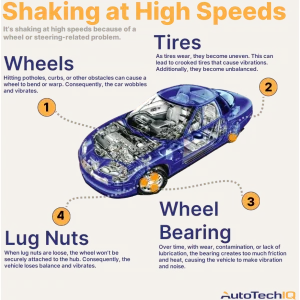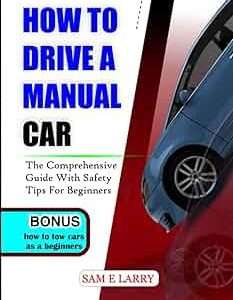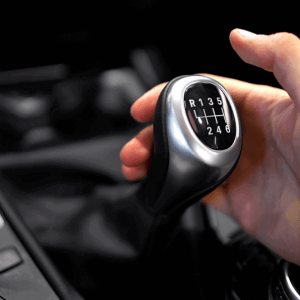Understanding Automatic Transmissions in Classic Cars
Automatic transmissions in classic cars offer a unique driving experience. They provide convenience, but understanding their nuances is crucial. This section explores the basics. It is important to know how they differ from modern automatics.
Classic car automatic transmissions often have fewer gears. This can affect fuel efficiency and performance. They also rely on different hydraulic systems.
Tip: Regularly check the transmission fluid level and condition. This simple step can prevent major problems!
Advantages and Disadvantages
Choosing an automatic transmission for your classic car involves weighing the pros and cons; Consider your driving style and preferences. Let’s examine the key aspects.
Advantages:
- Ease of driving, especially in city traffic.
- Reduced driver fatigue on long journeys.
- Preservation of the engine’s original condition (less wear and tear).
Disadvantages:
- Potentially lower fuel economy compared to manual transmissions.
- Can feel less engaging for some drivers.
- May require more frequent maintenance in older models.
Ultimately, the best choice depends on your individual needs. Think about what you value most in your classic car experience.
Maintenance and Repair
Proper maintenance is essential for keeping your classic car’s automatic transmission running smoothly. Neglecting maintenance can lead to costly repairs. Here’s what you need to know.
Regular fluid changes are paramount. Use the correct type of fluid as specified in your car’s manual. Inspect the transmission for leaks regularly.
Interesting Fact: Some classic car automatic transmissions use unique fluids that are no longer readily available. Research suitable alternatives carefully!
If you notice any unusual noises or shifting problems, seek professional help immediately. Early intervention can prevent further damage.
FAQ: Frequently Asked Questions
Troubleshooting Common Issues
Even with meticulous maintenance, classic car automatic transmissions can experience problems. Understanding common issues can help you diagnose and address them effectively. Let’s delve into some frequent culprits.
Slipping Gears:
This often indicates worn clutch packs or low fluid pressure. It can manifest as the engine revving without a corresponding increase in speed. A fluid change might temporarily alleviate the issue, but a rebuild is often necessary.
Rough Shifting:
Jerky or harsh shifts can stem from several factors, including a malfunctioning vacuum modulator (if equipped), worn valve body components, or incorrect fluid levels. A thorough inspection is crucial to pinpoint the root cause.
Fluid Leaks:
Leaks are a common problem in older transmissions due to aging seals and gaskets. Identifying the source of the leak is paramount. Replacing the affected seals or gaskets is usually the solution. Ignoring leaks can lead to catastrophic transmission failure.
Unusual Noises:
Whining, clunking, or buzzing sounds can signal internal damage. These noises should not be ignored. They often indicate worn bearings, damaged gears, or a failing torque converter. Immediate professional attention is recommended.
Pro Tip: When troubleshooting, always start with the simplest solutions first. Check fluid levels, vacuum lines, and electrical connections before assuming a major internal problem.
Modifications and Upgrades
While preserving originality is often a priority with classic cars, certain modifications and upgrades can enhance the performance and reliability of the automatic transmission. Consider these options carefully, weighing the benefits against potential drawbacks.
Shift Kits:
These kits modify the valve body to provide firmer and quicker shifts. They can improve performance and responsiveness, but may also increase wear and tear on other transmission components. Research reputable brands and consider professional installation.
Torque Converter Upgrades:
A higher stall speed torque converter can improve acceleration, especially with modified engines. However, it can also negatively impact fuel economy and increase heat generation. Choose a converter that is well-suited to your engine’s characteristics and driving style.
Transmission Coolers:
Adding an external transmission cooler can significantly reduce operating temperatures, extending the life of the transmission. This is particularly beneficial for cars that are used for towing or driven in hot climates. Ensure the cooler is properly sized and installed.
Electronic Overdrive Units:
For classic cars without overdrive, adding an aftermarket electronic overdrive unit can improve fuel economy and reduce engine RPM at highway speeds. These units are typically installed between the transmission and the driveshaft. Professional installation is highly recommended.
Remember to research any modifications thoroughly and consult with experienced professionals before making any changes to your classic car’s automatic transmission. Prioritize reliability and longevity over short-term performance gains.
Choosing the Right Transmission Shop
Finding a qualified and reputable transmission shop is crucial for maintaining and repairing your classic car’s automatic transmission. Not all shops have the expertise and experience necessary to work on older vehicles. Here’s what to look for.
- Experience with Classic Cars: Inquire about the shop’s experience working on classic cars, specifically those with automatic transmissions similar to yours. Ask for references or examples of previous work.
- Specialized Tools and Equipment: Ensure the shop has the necessary tools and equipment to diagnose and repair older transmissions. This may include specialized diagnostic scanners, pressure gauges, and rebuilding equipment.
- Knowledge of Obsolete Parts: Classic car transmissions often require obsolete or hard-to-find parts. A good shop will have established relationships with suppliers who specialize in vintage automotive components.
- ASE Certification: Look for technicians who are ASE certified in automatic transmission repair. This certification demonstrates a commitment to professional standards and ongoing training.
- Warranty: Inquire about the shop’s warranty policy on repairs and rebuilds. A reputable shop will stand behind their work and offer a reasonable warranty period.
Don’t hesitate to ask questions and thoroughly vet potential transmission shops before entrusting them with your classic car. A little research can save you time, money, and headaches in the long run.




